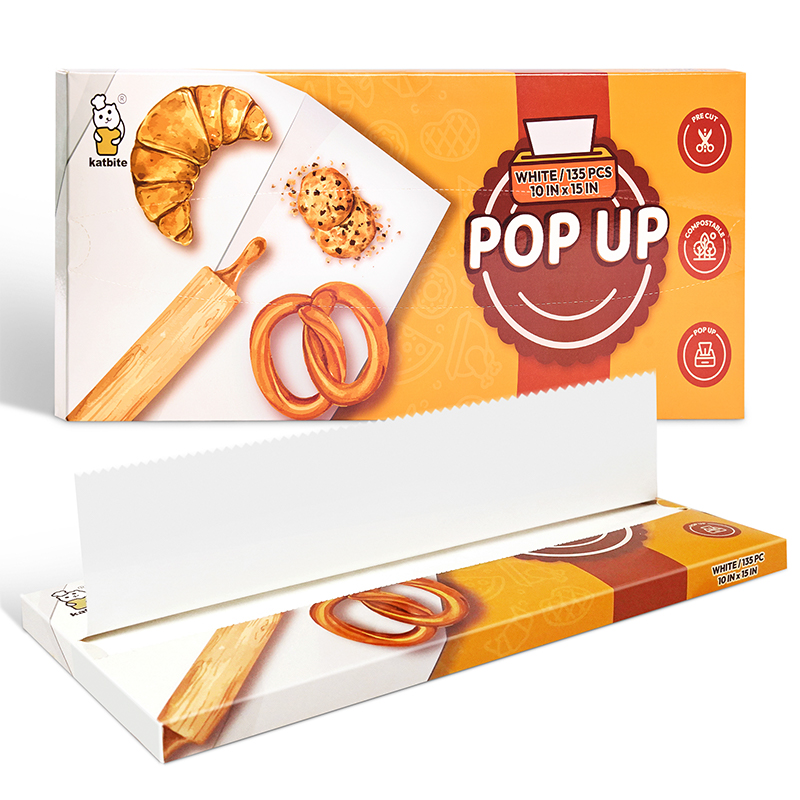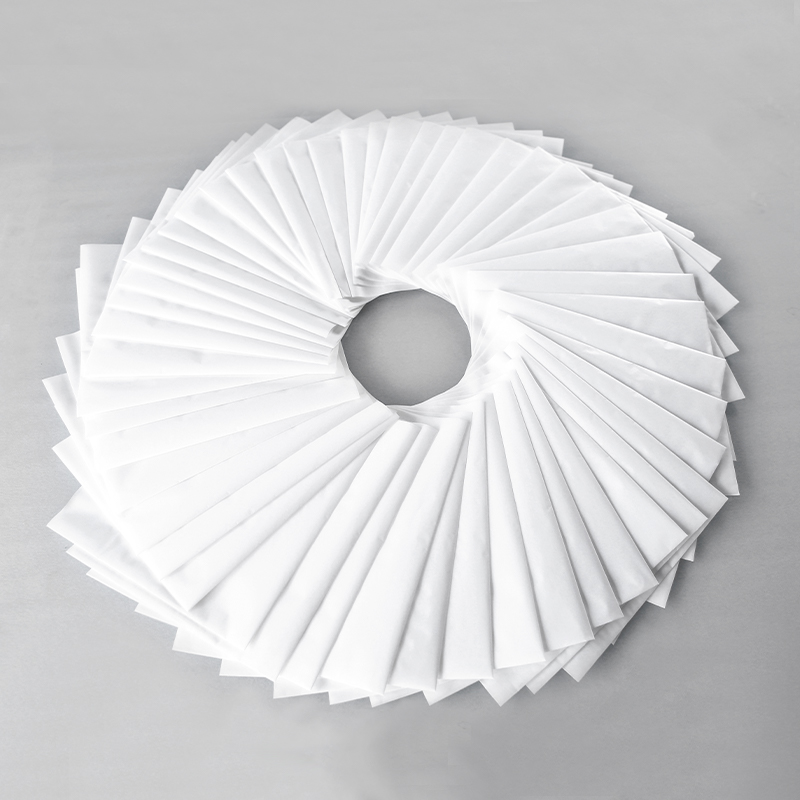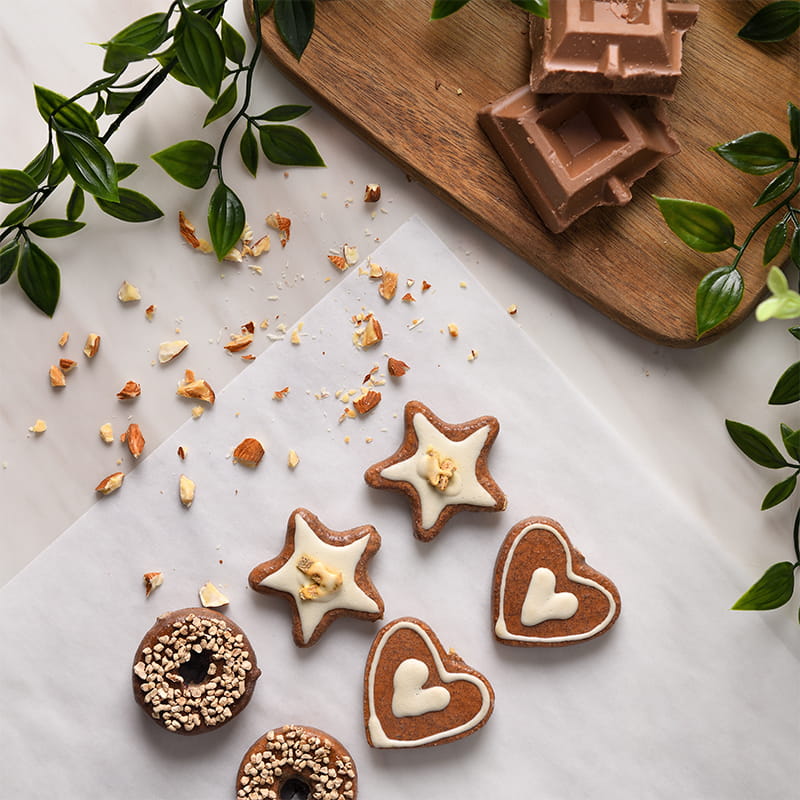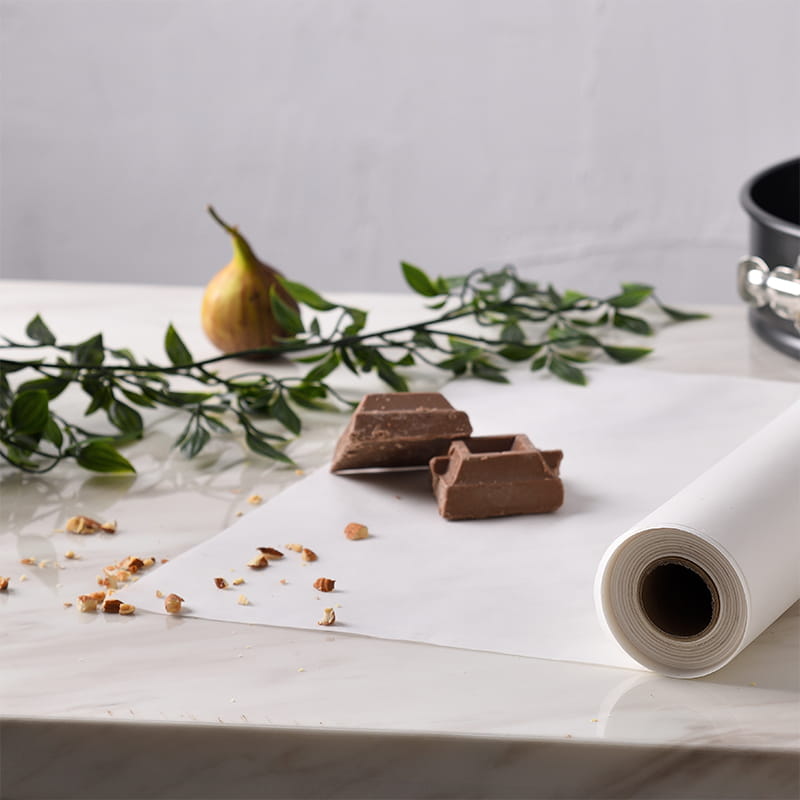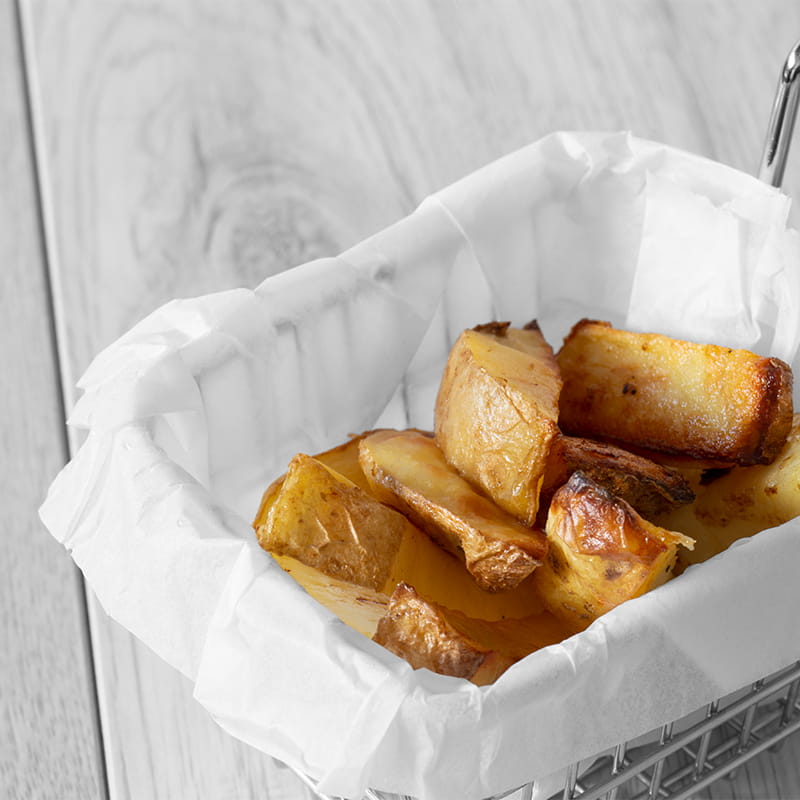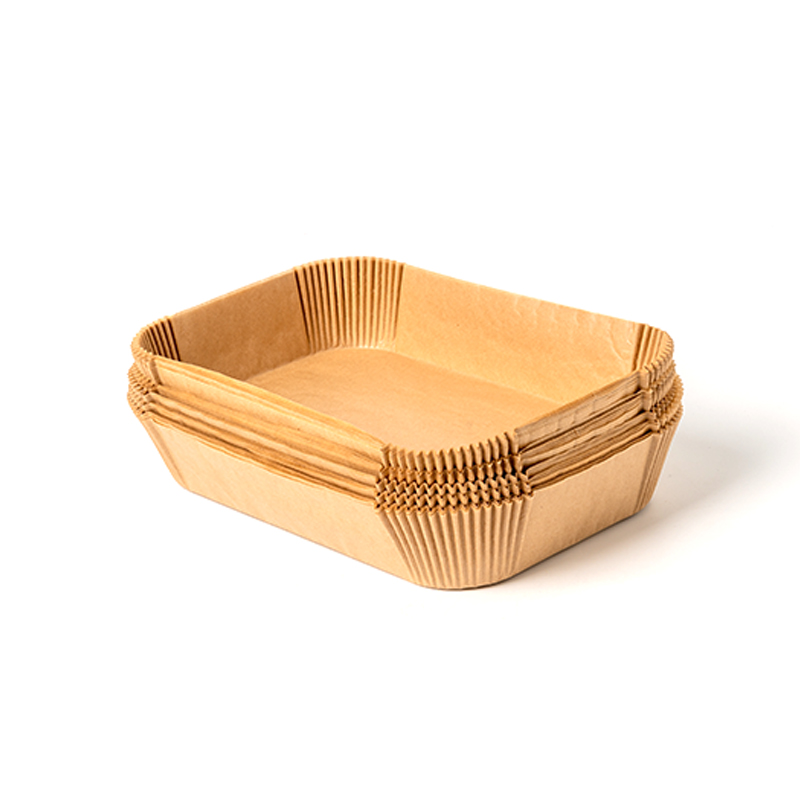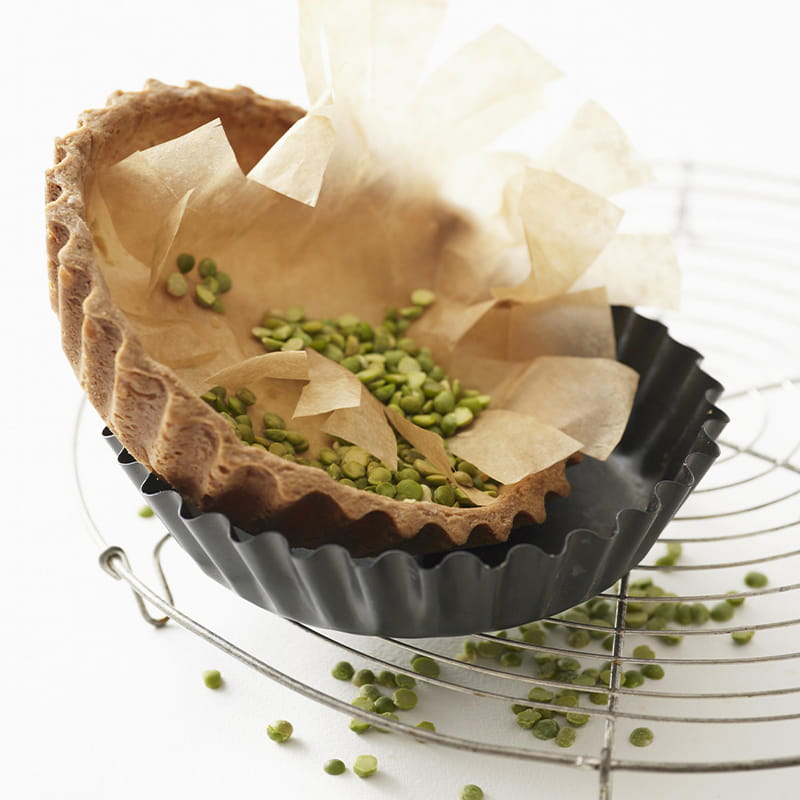Product details: Pop-up parchment paper sheets, an environment-friendly product, are composed of wood pulp and are double-side coated with silicone. Such a coating makes our paper smooth, greasepr...
See DetailsIs Guanghe Baking Paper Healthy to Use?
Concerns about kitchen safety are natural, especially when introducing materials like parchment paper into our cooking routines. This versatile tool offers convenience, but understanding its properties and limitations is key to using it healthily and effectively. Let's examine the evidence surrounding Baking Paper safety from multiple angles.
Beyond the Surface: What Makes Parchment Paper Work?
Parchment paper isn't ordinary notebook paper. Its functionality stems from a specialized manufacturing process:
1.Wood Pulp Base: Starts as cellulose fibers derived from wood.
2.Acid Bath Treatment: This step alters the cellulose structure, making the paper denser, stronger, and less porous compared to regular paper.
3.Silicone Coating Application: A thin layer of food-grade silicone is applied to both sides. This is the critical step that provides non-stick properties and significantly enhances heat resistance.
This process fundamentally transforms the paper, giving it unique characteristics suitable for oven use under normal conditions.
Addressing the Core Safety Concerns
Based on the provided text and broader research, let's delve into the primary questions:
1.Fire Hazard Potential:
Heat Resistance, Not Fireproof: The silicone coating grants Parchment Paper substantial heat tolerance, allowing it to withstand typical baking temperatures without igniting or charring immediately. It functions well within standard oven ranges.
Critical Limitations: Crucially, parchment paper is not designed for direct exposure to intense heat sources. Contact with oven heating elements, grill flames, broilers, or the walls of a toaster oven dramatically increases ignition risk. The substrate is still cellulose, which can burn under very direct heat.
Safe Usage Practices:
Always keep parchment paper away from direct contact with heating elements.
Avoid letting parchment paper touch the sides or top of the oven cavity.
Never use parchment paper under a broiler or on a grill grate over open flames.
Monitor cooking times, especially at higher temperatures or prolonged baking.
Parchment Paper Fire Safety Guide:
|
Scenario |
Risk Level |
Recommendation |
|
Standard baking (< typical oven max) |
Low |
Generally safe with proper placement |
|
Touching oven heating element |
Very High |
Absolutely Avoid |
|
Under broiler/grill element |
High |
Do Not Use |
|
Curling onto oven walls |
Moderate |
Trim paper to fit pan securely |
|
Extended baking times |
Moderate |
Monitor periodically |
2.Chemical Leaching Concerns:
The Silicone Factor: The primary concern revolves around the silicone coating. Food-grade silicone, when properly cured, is known for its inertness and stability at high temperatures. It doesn't typically react with food or release harmful chemicals under normal baking conditions.
Potential Exceptions: Some isolated studies suggest trace amounts of compounds might potentially migrate under very scenarios (e.g., temperatures significantly exceeding standard baking ranges for prolonged periods, or when cooking very acidic or oily foods). However, regulatory agencies generally regard food-grade silicone as safe for cooking.
Bleaching Process: This introduces another layer to consider (see point 3).
Mitigation: Using parchment within recommended temperature guidelines and avoiding direct contact with acidic foods for extremely long durations minimizes any potential concerns. Unbleached options offer a simpler composition.
3.Safety of Bleached Parchment Paper:
Purpose of Bleaching: Bleaching achieves the bright white color many associate with parchment paper. Historically, elemental chlorine was used, raising concerns about dioxin residues – persistent environmental pollutants with potential health risks.
Modern Practices: Reputable manufacturers overwhelmingly use Elemental Chlorine-Free (ECF) or Totally Chlorine-Free (TCF) bleaching processes today. ECF typically employs chlorine dioxide, which significantly reduces dioxin formation. TCF uses alternatives like oxygen, hydrogen peroxide, or ozone.
Regulatory Oversight: Strict regulations limit residual compounds in food-contact materials. Bleached parchment paper meeting food safety standards is generally cleared for use. Concerns diminish significantly with responsible manufacturers adhering to these standards.
The Unbleached Alternative: For those seeking the simplest option, unbleached (natural brown) parchment paper undergoes minimal processing – typically just the acid bath and silicone coating. This avoids bleaching chemicals entirely.
Expanding the Perspective: Beyond Immediate Safety
Environmental Considerations: While convenient, parchment paper is single-use. Its composability is often debated due to the silicone coating; some facilities accept it, others do not. Recycling is rare. Reusable alternatives like silicone baking mats offer a lower-waste option for many tasks, though require energy and resources to produce.
Comparing Alternatives: Understanding parchment paper's role means looking at its peers:
Wax Paper: Coated with paraffin or soybean wax. Not oven-safe – wax melts and can smoke or ignite at baking temperatures. Only suitable for cold uses or food wrapping.
Aluminum Foil: Excellent heat conductor and barrier. Can react with acidic foods (tomatoes, citrus), potentially leaching aluminum. Can cause over-browning on the bottom. Creates waste.
Silicone Baking Mats: Reusable, non-stick, oven-safe across a wide range. Eliminates paper waste. Requires cleaning. Initial production footprint higher than single-use paper. Can impart slight flexibility to baked goods.
Cooking Sprays/Oils: Direct application to pans. Minimal waste beyond the spray can. Can sometimes cause to uneven browning or sticking if not applied well. Potential for aerosolized oils in the air.
Practical Health & Safety: The convenience of parchment paper can indirectly support healthier cooking. It prevents sticking without needing excessive oils or fats, promotes even baking and browning, reduces burnt-on messes (making pan cleaning easier and potentially reducing harsh cleaner use), and helps prevent cross-contamination during prep (e.g., rolling dough).
Making Informed Choices for Safe Baking
1.Choose Reputable Sources: Opt for parchment paper clearly labeled for food use from known manufacturers, ideally indicating compliance with food safety regulations (e.g., FDA in the US).
2.Consider Bleaching: If chemical residues are a primary concern, choose unbleached parchment paper. If using bleached, look for indicators of ECF or TCF processes (though this isn't always explicitly stated on consumer packaging).
3.Use Correctly: Respect temperature limits and never expose to direct heat sources, broilers, or grill flames. Ensure the paper lies flat within the bakeware.
4.Mind Food Interactions: While low-risk, limiting extended contact between very acidic foods and parchment at high heat is a prudent practice.
5.Evaluate Needs: Consider the environmental impact and whether a reusable silicone mat could effectively replace parchment for your frequent baking tasks. For occasional use or specific tasks requiring disposable lining (like candy making or extremely sticky items), parchment remains a practical choice.
Conclusion: A Balanced View on Baking Paper Safety
Available evidence and regulatory positions suggest that parchment paper, when used appropriately according to manufacturer instructions, is considered a safe and convenient tool for baking and cooking. The risks associated with fire are manageable through correct placement and avoiding very heat exposure. Concerns about chemical leaching from silicone are minimal under standard baking conditions, especially compared to many plastic alternatives. The shift away from problematic chlorine bleaching methods has further improved the safety profile of bleached parchment paper, though unbleached offers the more minimal processing.
By understanding its composition, limitations, and alternatives, consumers can make confident choices aligned with their health priorities, environmental values, and cooking needs. Parchment paper's primary benefits – ease of use, non-stick performance, and promotion of even cooking – continue to make it a valuable asset in a health-conscious kitchen when used knowledgeably.


 English
English 中文简体
中文简体